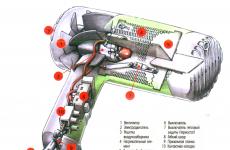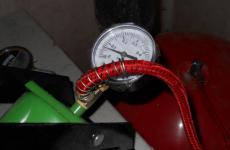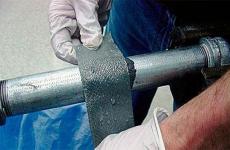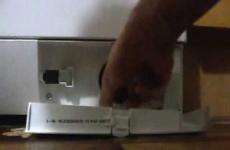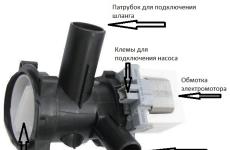Why does the pressure drop in the heating system - the reasons and how to eliminate them
"Why does the pressure drop in the heating system and how to return the pressure back?" - if you are interested in this issue, then some trouble has happened to your heating system. But do not be discouraged, this is a fixable matter. Now we will deal with the causes of the pressure drop effect, and with ways to eliminate such a failure.
5 most likely causes of pressure loss
The main reasons for the drop in pressure in the system are:
- 1. Depressurization of wiring elements - pipes and radiators. In this case, the system loses the coolant and pressure.
- 2. Breakage in the expansion tank, which can no longer work as a compensator and maintain the set pressure.
- 3. An air bubble (pocket) in a radiator or heat pipe. After the descent of such a bubble, the pressure can drop by several tenths or even whole parts of the atmospheric pressure.
- 4. Defect in the integrity of the heat exchanger in the heating boiler. Your heater loses heat transfer fluid and, with it, pressure.
- 5. Depressurization of the valve blocking the coolant discharge line.
As you can see: the main reason for the loss of pressure is the depressurization of one or more elements. Therefore, to increase the pressure, it is necessary, firstly, to eliminate the leak, and secondly, to top up the coolant in the system. And if, in the case of the drain valve, these works do not require much effort - the user closes the shut-off unit "with a slight movement of the hand", then you will have to tinker with other incidents longer. And now we will teach you what to do when the pressure in the boiler drops.
How to determine the culprit of the loss of pressure?
So, the most important thing is to understand what exactly led to the loss of pressure. To do this, follow the algorithm. First, we take a regular paper towel and wipe off all the fittings. In this case, after each joint, you need to carefully examine the napkin - if there is a wet spot on it. If there is, the reason has been found. If not, you need to move on.
Secondly, we spread dry newspapers under the batteries and wipe all the pipes with the same blotter napkin. If a wet spot is found, the leak is localized. If not, go to the next item. Thirdly, we measure the pressure in the expansion tank and pump it up. This can be done with a regular bicycle pump and a factory pressure gauge. The head no longer drops - congratulations, you solved the air pocket problem. But if after pumping up the pressure drops sharply or does not deviate from the initial one, your hydraulic tank has a torn membrane. If the pressure drops smoothly, we move on.
Fourthly, we shut down the boiler and close the valves on the pressure and return pipes, cutting off the heater from the system. We measure the pressure for an hour - if it has not dropped, then the water heater itself, or rather its heat exchanger, is to blame. Also in the boiler Navien or any other two-circuit installation, the air vent or pressure relief valve may malfunction. Fifthly, we check the shut-off valve on the branch to discharge the coolant into the sewer. If it is weakened, it needs to be blocked or replaced (it is better to cut another one downstream). After localizing the leak or determining the cause, you can begin to eliminate it. How to do it? We will discuss this below.
What to do to eliminate leakage of pipes and radiators
This problem can be solved simply: we patch the cracks in the pipes, and tighten the weakened fittings, restoring the tightness of the joints. Therefore, if the reason due to which the pressure in the gas boiler drops is a leaky pipe or a poorly tightened joint, then you will spend much less time on eliminating such a defect than on locating the leak.
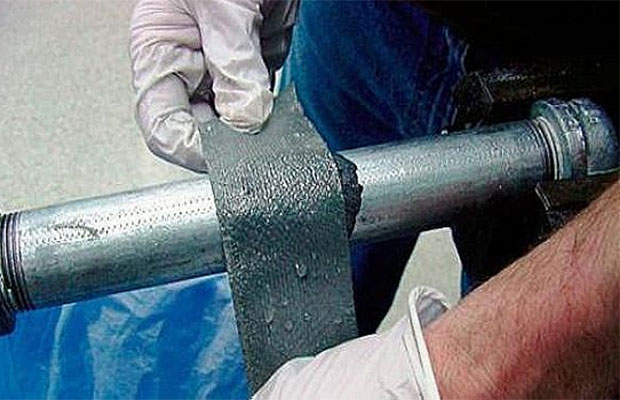
A patch on a polymer pipe is cut out of the cut of reinforcement and glued to the leak using a special compound adapted for polypropylene or polyethylene. The copper pipe can be sealed, the steel pipe can be welded. If you have no glue, no welding machine, or a soldering iron on hand, get two screw clamps and a rubber patch cut from an old bicycle or car camera. Press the patch against the crack and pull it to the pipe body with clamps.
A chip or crack on the battery can be removed by welding, soldering. If you have neither the skills nor the welding equipment, use a "liquid weld" epoxy, which is glued to the leak and pressed against the pipe with a clamp or screw clamp. With a leaking joint, they do it even easier. Collet clamps are tightened tighter, until a characteristic squeak, signaling the beginning of deformation of the pipe body. With threaded squeegees, they do the opposite - unscrew the lock nut, screw several turns of FUM or silicone-impregnated tow onto the pipe and tighten the clamping nut to the old place.
How to fix a hydraulic tank - instructions for everyone
Usually complaints about this node begin with the words: "I raise the pressure, but nothing happens." Moreover, the expansion tank itself can stand alone or be part of the boiler. As we said above: the lack of response to pumping of the compensator is the first sign of a defect in its membrane. What to do in this case? Of course, change this membrane:
- We shut off the valve under the tank, cutting off this unit from the heating system.
- We dismantle the tank by twisting it off the valve. Moreover, under it you need to put an empty bowl or bucket in advance, where the rest of the water contained in the tank will merge. Attention! The water can be hot, so dismantling should be done an hour after the lower valve is closed.
- We open the compensator body by unscrewing the nuts on the flange. In this case, it is better to twist the nuts sequentially - 2-3 turns each, in order to avoid distortions. Use the same diagram when assembling the flange assembly.
- We collect the tank and put it in place by screwing it onto the valve. Pay attention to the American fittings - they facilitate the installation and dismantling of any collapsible connection in the heating system. If there is a regular fitting under your tank, change it to an American one.
- We pump the expansion joint with a bicycle pump connected to the nipple in the upper part of the body. The optimal pressure in this case is 1.5-3 atmospheres.
- We open the valve under the tank and add the required amount of water to the system.
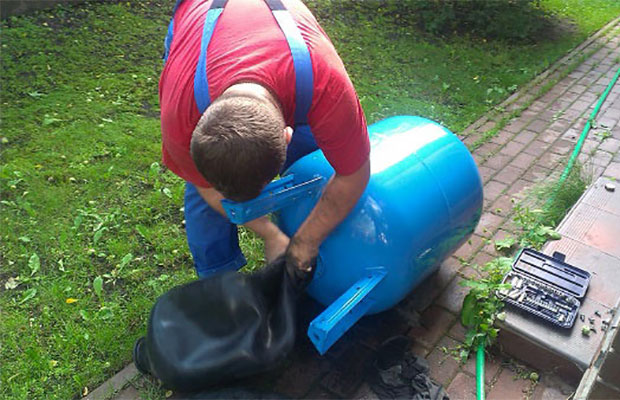
Only a collapsible tank can be repaired using this scheme. If your expansion joint cannot be repaired, buy a new one of the same size. Proceed in the same way if the tank is built into the heater. This advice is true not only for boilers of the brand. Navien, but also for equipment from other manufacturers.
How to bleed an air pocket from a radiator without losing pressure
First, you need to locate the air pocket. It is easily localized by the characteristic gurgling sound accompanying the flow of the coolant through the airy area. After that, it would be a good idea to record the initial pressure by reading the readings on the pressure gauge. We will be guided by this indicator before raising the pressure in the boiler, after eliminating the air bubble.
Switch off the boiler or circulation pump (if the latter is not included in the heater). Pressure equipment generates an impulse in the heating network, ensuring circulation, and when etching an air pocket, this effort will be superfluous.
Next, substitute a bucket or basin under the Mayevsky faucet of the air-conditioned battery and turn its valve in the direction of the arrow in the desired direction. First, air will go through the hole in the faucet (with a hiss, like from a released balloon), and then water will drip. But do not rush to close the tap - after a small portion of water, air will come out of the battery again. Close the valve only after making sure that only water is coming from the faucet.
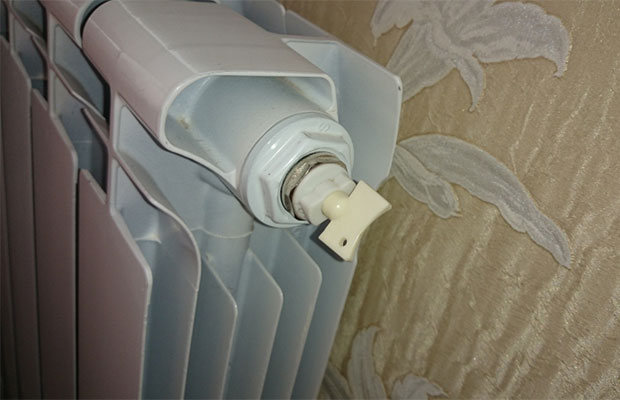
Then read the current pressure value on the pressure gauge (it will be less than the initial one) and open the water supply valve to the distribution system from the water supply, monitoring the pressure gauge readings. As soon as they get close to the starting mark (we wrote it down earlier), close the water supply valve. Now turn on the boiler (pump) and listen for the noise in the batteries. If you hear gurgling or gurgling, do all the above manipulations from the very beginning - until the gurgling sounds completely disappear when water moves through pipes and radiators.
What if the source of the problem is the boiler?
If the boiler is the source of the problem, you will most likely have to call a technician from a service company or service center. Only specially trained people can repair gas equipment. After all, the consequences of mistakes in this case lead to disasters on a local scale. The slightest leak in the gas equipment (with the ventilation system inoperative) leads to an increase in the concentration of the air-gas "cocktail" to an explosive level.
Moreover, even a small spark in the outlet is enough to activate the explosion. Therefore, an independent repair of a gas boiler, or even an attempt at one, will lead to very sad consequences. As a result, if the drop in pressure in the system does not bother you very much, wait until the end of the heating period and call the boiler master. If you do not want or cannot tolerate this disgrace, drain the water from the system and, again, call the master. We do not recommend in any case independent boiler repair with replacement of the heat exchanger, controller or expansion tank.

